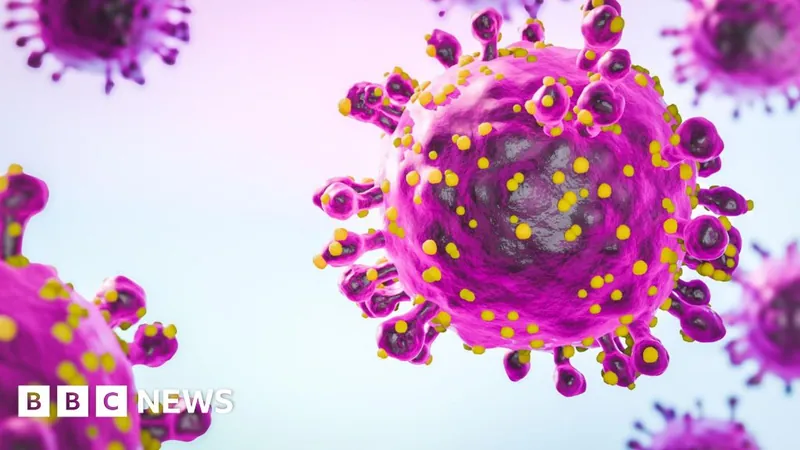
UK Unveils New Watch List of Priority Pathogens That Could Threaten Public Health
2025-03-25
Author: Jessica Wong
In a proactive move to safeguard public health, the UK has established a watch list of 24 infectious diseases deemed to pose significant future threats. This initiative, spearheaded by the UK Health Security Agency (UKHSA), aims to ensure that the UK is better prepared for potential pandemics and outbreaks.
Among the pathogens on the list are well-known global threats such as Avian flu and various mosquito-borne diseases, which could become more prevalent due to the ongoing effects of climate change. These illnesses are not only a concern because of their potential to spread rapidly but also due to the possibility that current treatments may not be effective.
The UKHSA's Chief Scientific Officer, Professor Isabel Oliver, emphasized that the list is not ranked, reflecting the dynamic nature of infectious disease threats. The agency intends to update the list at least once a year to stay abreast of emerging health risks and avoid the mistakes made during the Covid-19 pandemic, when anticipation was focused largely on influenza rather than other possible pandemics.
Professor Mark Woolhouse, director of the Tackling Infections to Benefit Africa initiative at the University of Edinburgh, highlighted the importance of this watch list, stating that previous pandemic responses were insufficient due to a lack of diverse threat understanding. The creation of this priority list is a crucial step in a global effort to respond more effectively to future health crises.
Particularly alarming is the mention of the Paramyxoviridae virus family, which includes the contagious measles virus. Experts warn that a novel strain related to measles could spread swiftly and uncontrollably, potentially resulting in a public health crisis far graver than what was experienced during Covid-19. This new threat could disproportionately affect children, raising further urgency to develop preventive measures.
Moreover, the UKHSA is committed to collaborating with animal health experts for ongoing evaluations, recognizing that many emerging diseases are zoonotic—transmitted from animals to humans. This approach reflects an understanding of the interconnectedness of human, animal, and environmental health.
In addition to viral threats, the watch list also highlights antibiotic-resistant bacteria like gonorrhea, showcasing a growing concern that existing medications may soon become ineffective. This component underscores the need for continuous development of novel treatments and public health strategies.
As the world grapples with the aftershocks of the Covid-19 pandemic, this new pathogen watch list serves as a crucial reminder of the ever-evolving landscape of infectious diseases. The UK is taking assertive steps to fortify its defenses, aiming to avert future health emergencies and ensure the safety of its population.






 Brasil (PT)
Brasil (PT)
 Canada (EN)
Canada (EN)
 Chile (ES)
Chile (ES)
 Česko (CS)
Česko (CS)
 대한민국 (KO)
대한민국 (KO)
 España (ES)
España (ES)
 France (FR)
France (FR)
 Hong Kong (EN)
Hong Kong (EN)
 Italia (IT)
Italia (IT)
 日本 (JA)
日本 (JA)
 Magyarország (HU)
Magyarország (HU)
 Norge (NO)
Norge (NO)
 Polska (PL)
Polska (PL)
 Schweiz (DE)
Schweiz (DE)
 Singapore (EN)
Singapore (EN)
 Sverige (SV)
Sverige (SV)
 Suomi (FI)
Suomi (FI)
 Türkiye (TR)
Türkiye (TR)
 الإمارات العربية المتحدة (AR)
الإمارات العربية المتحدة (AR)